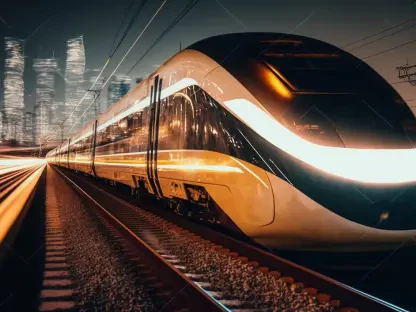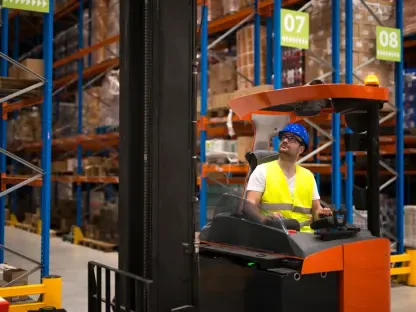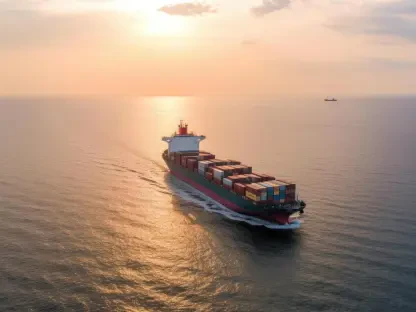Global supply chains are crumbling under pressures no one saw coming—geopolitical clashes, environmental disasters, and tech failures striking without warning, leaving businesses vulnerable. What if a company could build a system so strong that it doesn’t just survive these hits but barely notices them? Siemens, an industrial titan, is forging a path that flips the script on traditional supply chain thinking, moving beyond recovery to raw, unyielding strength. This isn’t just about staying afloat; it’s about rewriting the rules of endurance in a world that’s anything but predictable.
Why Supply Chains Must Brace for the Unexpected
The reality of modern commerce is stark: disruptions are no longer exceptions but the norm. From trade wars to climate-driven catastrophes, businesses face a gauntlet of challenges that can halt operations overnight. Siemens recognizes that waiting for the next crisis to strike is a losing game. Instead, the company is championing a mindset that anticipates chaos, designing frameworks that absorb shocks before they spiral into disasters. This shift in perspective is not just innovative—it’s a lifeline for industries tethered to complex global networks.
The stakes couldn’t be higher for sectors like manufacturing and infrastructure, where a single delay can cascade into massive losses. Siemens’ approach offers a glimpse into a future where supply chains don’t just react but stand firm, no matter the storm. By focusing on preemptive strength, the company is setting a benchmark for others to follow, proving that survival in today’s landscape demands more than quick fixes.
The Critical Shift to a New Supply Chain Model
Traditional supply chain strategies, often reliant on last-minute heroics, are becoming relics in an era of unrelenting change. With forces like tightening regulations, sustainability pressures, and shifting workforce dynamics reshaping the playing field, clinging to outdated methods is a recipe for failure. Siemens’ Smart Infrastructure division, which supports vital sectors such as power grids and healthcare, underscores the urgency of this evolution. The cost of inaction is evident in delayed projects and compromised safety, risks no industrial player can afford.
Adaptation is no longer optional but a mandate for longevity. The push toward a proactive model isn’t merely about keeping up—it’s about securing a competitive edge in an environment where unpredictability reigns. Siemens’ pivot highlights a broader truth: companies must rethink their foundations to withstand pressures that show no sign of easing.
Siemens’ Game Plan: Building Unbreakable Systems
Siemens is redefining supply chain management by prioritizing robustness over mere resilience, a distinction that changes everything. Robustness, as articulated by Alexander Tschentscher, Vice President of Supply Chain Excellence, isn’t about bouncing back—it’s about ensuring disruptions don’t knock the system down in the first place. He likens it to preventing illness rather than enduring harsh treatment, a powerful metaphor for designing operations that sidestep chaos.
This strategy rests on multiple fronts. Siemens tackles industrial challenges head-on by forging enduring supplier relationships, crucial for high-stakes products bound by strict certifications. Additionally, the company harnesses macro trends—AI for sharper forecasting, localized sourcing to navigate regulatory mazes, and sustainable practices to meet global demands. These elements combine to create a supply chain that doesn’t just endure but excels under pressure.
Data backs up the impact of such foresight. Studies indicate that companies adopting predictive systems see a 30% reduction in operational downtime, a figure Siemens aims to surpass through meticulous planning. This blueprint isn’t just theory; it’s a practical shield against the volatility that defines today’s markets.
Expert Perspectives: Leadership on the Front Lines
At the DELIVER Europe event in Amsterdam, Alexander Tschentscher delivered a striking message: supply chains shouldn’t just weather crises—they should be built so crises can’t shatter them. His words carry weight, drawn from managing a colossal operation of over 400,000 tons moved annually across 160 warehouses. The emotional and operational strain of constant crisis mode, he notes, is unsustainable for teams on the ground, pushing the need for a fundamental redesign.
Tschentscher’s vision aligns with industry experts who see proactive strategies as the future of logistics. His emphasis on cultural shifts—getting teams to think ahead rather than react—resonates with a growing consensus that technology alone isn’t enough. Siemens’ leadership argues that true strength comes from blending human insight with systemic innovation, a balance critical for navigating an ever-shifting global terrain.
The conversation extends beyond tactics to mindset. Transforming how professionals approach their roles, from firefighters to strategists, is a priority Siemens champions, setting an example for others in high-stakes industries. This perspective isn’t just inspiring—it’s a call to rethink what durability means in practice.
Practical Steps for Crafting a Stronger Supply Chain
For companies looking to emulate Siemens’ model, actionable steps can pave the way to a more robust operation. Start with fostering strategic thinking through structured programs like training boot camps and self-assessment tools, mirroring Siemens’ “learning journey” to shift mindsets from reactive to anticipatory. This cultural overhaul equips teams to spot risks before they emerge, a cornerstone of enduring systems.
Technology must be integrated with precision, leveraging AI for forecasting and scheduling while ensuring data quality and defined roles for human oversight, as Tschentscher advises. Simultaneously, embedding sustainability—aligning with emission reduction goals and circular economy principles—meets regulatory and investor expectations. Preparing staff for global variances, such as adapting to digital tool restrictions in certain markets, adds another layer of flexibility.
Finally, building unbreakable supplier partnerships is non-negotiable, especially in industries with rigid standards. Long-term collaborations ensure compliance and stability, reducing the risk of costly disruptions. These strategies, grounded in Siemens’ proven framework, offer a roadmap for businesses ready to fortify their supply chains against an unpredictable world.
Reflecting on a Transformative Journey
Looking back, Siemens’ bold redefinition of supply chain management stood as a turning point for industrial giants grappling with relentless disruptions. Their commitment to robustness over resilience reshaped how challenges were met, inspiring a wave of strategic overhauls across sectors. The lessons drawn from their approach—prioritizing prevention, cultural empowerment, and balanced innovation—became invaluable guides for navigating chaos.
As industries continue to evolve, the next step lies in scaling these principles, tailoring them to unique operational needs while investing in predictive tools and partnerships. Businesses are encouraged to assess their vulnerabilities and act decisively, embedding foresight into every layer of their systems. Siemens’ legacy in this space serves as a reminder that strength isn’t just built—it’s engineered with purpose and vision.









